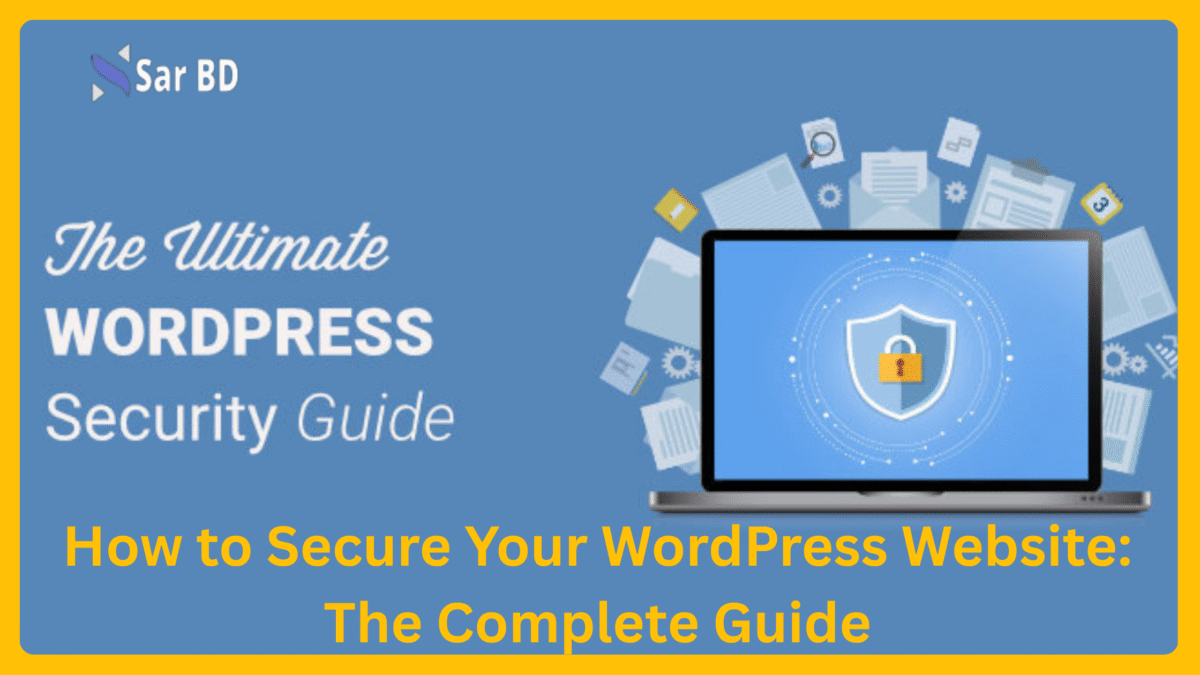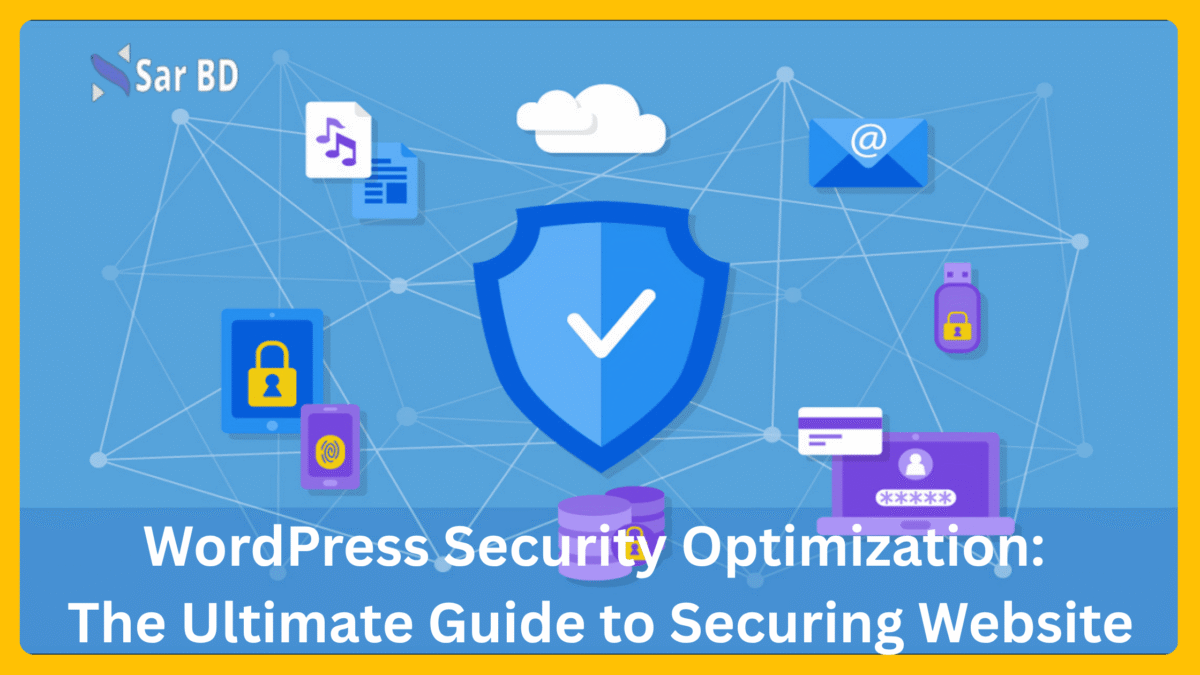How to Secure Your WordPress Website: The Complete 2025 Guide
In today’s digital landscape, cybersecurity is not optional—it’s essential. If you’re running a WordPress site, whether it’s a small personal blog or a high-traffic eCommerce store, securing it is crucial. The number of cyber threats targeting WordPress has risen dramatically due to its popularity. This article will show you exactly how to secure your WordPress website using proven techniques that actually work in 2025.
We’ve written this guide to be comprehensive, easy to follow, and 100% human-like, offering practical tips that you can implement today. Our goal is to make sure your WordPress site is not just functional, but also safe from hackers, bots, and malware.
Why You Must Learn How to Secure Your WordPress Website
Learning how to secure your WordPress website is not just for tech experts—every website owner needs this knowledge. Failing to secure your site can result in data theft, loss of traffic, SEO penalties, and even legal consequences.
-
Massive Exposure Risk: WordPress powers over 43% of all websites. Its popularity makes it a prime target for attackers. By learning how to secure your WordPress website, you’re staying one step ahead.
-
SEO and Reputation Damage: A hacked website may be blacklisted by Google, causing a drop in search rankings. Implementing effective security measures helps prevent such catastrophic events.
-
User Data Protection: Whether you collect emails, payment info, or comments, user data must be protected. Securing your WordPress website ensures compliance with GDPR and other regulations.
-
Downtime Equals Revenue Loss: A compromised website might be taken offline. For eCommerce stores, this can mean thousands of dollars in lost revenue.
-
Legal Obligations: Various countries have strict digital protection laws. Knowing how to secure your WordPress website helps you avoid fines and lawsuits.
-
Peace of Mind: Most importantly, securing your site gives you peace of mind. You’ll sleep better knowing you’re protected from daily cyber threats.
Choosing a Secure Hosting Provider: The First Step
Choosing a secure host is the foundation when learning how to secure your WordPress website effectively.
-
Built-in Security Tools: A good host provides tools like firewalls, malware scanners, and DDoS protection, reducing the need for extra plugins.
-
Automatic Backups: Reliable hosting companies offer daily automatic backups, allowing you to restore your site if anything goes wrong.
-
SSL Certificate Support: Most secure hosts offer free SSL certificates, which are essential for HTTPS encryption—a critical part of website security.
-
24/7 Monitoring: Choose a provider that monitors their servers around the clock to detect and neutralize threats immediately.
-
Reputation and Reviews: Check reviews and ratings for insights into a host’s security history. Don’t go with the cheapest provider—security is worth the investment.
-
Server Isolation: Quality hosts isolate accounts, so if one site is hacked, others remain unaffected.
-
Two-Factor Authentication (2FA): Some hosts allow you to enable 2FA for dashboard access. It’s an excellent first layer of defense.
Keep WordPress Core, Themes, and Plugins Updated
One of the simplest ways to secure your WordPress website is to keep everything updated.
-
Updates Patch Vulnerabilities: Developers release updates to fix known security issues. Ignoring them invites hackers.
-
Enable Auto-Updates: Enable auto-updates for trusted plugins and themes to stay protected automatically.
-
Check Changelogs: Review changelogs before updating to understand what’s changed or fixed.
-
Remove Unused Themes/Plugins: Delete anything you’re not using. Even inactive themes and plugins can be exploited.
-
Use Reputable Sources: Only install themes and plugins from official or trusted sources.
-
Test Before Updating: Use a staging environment to test updates before applying them on a live site.
-
Update PHP Version: Newer PHP versions are faster and more secure—ensure your host uses an up-to-date version.
Install Security Plugins to Enhance Protection
Security plugins are vital tools in your strategy to secure your WordPress website.
-
Firewall Protection: Tools like Wordfence or Sucuri include firewalls that block malicious traffic and attacks.
-
Malware Scanning: These plugins scan your site regularly for malware, helping catch problems early.
-
Login Security Features: Brute-force protection, CAPTCHA, and 2FA add strong defenses to your login system.
-
Activity Logs: Logs help you monitor changes and spot suspicious activity quickly.
-
File Integrity Monitoring: Security plugins compare core files against original versions to detect tampering.
-
Real-Time Alerts: Get alerts about unauthorized access attempts so you can act immediately.
-
IP Blocking and Country Restrictions: Block access from suspicious IP addresses or high-risk regions.
Limit Login Attempts and Secure the Login Page
Your login page is a common target for hackers. Strengthen it as part of securing your WordPress website.
-
Limit Login Attempts: Use a plugin to restrict the number of login attempts and lock out repeat offenders.
-
Rename Login URL: Change the default login URL to make it harder for bots to find your login page.
-
Two-Factor Authentication (2FA): Add a second verification step using SMS, email, or an authenticator app.
-
Use Strong Passwords: Combine uppercase, lowercase, numbers, and symbols for strong admin passwords.
-
CAPTCHA or reCAPTCHA: Block bots with visual tests on your login forms.
-
Disable XML-RPC: Disable this feature unless you specifically need it—it’s a known vulnerability point.
-
Enable Login Notifications: Receive alerts for successful and failed logins to monitor suspicious behavior.
Set Proper File Permissions
Incorrect file permissions can leave your site wide open. Setting them correctly is crucial.
-
Restrict File Access: Files like
wp-config.phpshould only be accessible by the server. -
Use Correct Permissions: Generally, use 644 for files and 755 for directories.
-
Avoid 777 Permissions: This setting gives full access to everyone—never use it.
-
Use an FTP Client: Tools like FileZilla help you manage file permissions safely.
-
Protect Sensitive Files: Lock down
.htaccess,wp-config.php, and.htpasswdfiles. -
Use Hosting Panel Tools: Control permissions easily through cPanel or Plesk if your host provides it.
-
Audit Permissions Regularly: Review your permissions quarterly, especially after updates or plugin changes.
Harden WordPress Database Security
Strengthening your database is a smart move when securing your WordPress website.
-
Change the Default Table Prefix: Switch from
wp_to something unique to make SQL injection attacks harder. -
Use Strong Credentials: Database usernames and passwords should be complex and unique.
-
Restrict User Privileges: Don’t give unnecessary access; avoid using root-level credentials.
-
Secure wp-config.php: Move this file one level above the root directory for extra protection.
-
Backup Your Database: Use encrypted, regular backups via plugins or server tools.
-
Use Read-Only Access: Set some database tables to read-only if full access isn’t required.
-
Monitor Activity: Plugins can notify you of unusual database behavior for early threat detection.
Secure Your Site Using .htaccess Rules
The .htaccess file is a powerful security tool if you’re using an Apache server.
-
Protect Critical Files: Deny access to
wp-config.phpand.htaccessitself to prevent manipulation. -
Disable Directory Browsing: Add
Options -Indexesto stop users from viewing directory contents. -
Restrict by IP Address: Limit admin panel access by IP to keep out unauthorized users.
-
Block Suspicious Bots: Stop known malicious bots from crawling your site.
-
Force HTTPS: Use rewrite rules to ensure your site is always served securely.
-
Leverage Browser Caching: Improve both performance and limit repeated calls to the server.
-
Set Custom Error Pages: Mask your file structure with 403 and 404 pages for improved user experience and security.
Manage User Roles and Permissions Wisely
Poorly managed user roles are often overlooked when figuring out how to secure your WordPress website.
- Assign the Least Privilege: Only give users the access they need. Don’t give admin rights to authors or editors unless absolutely necessary.
- Audit Users Regularly: Periodically review the list of users on your WordPress dashboard and remove inactive or unknown accounts.
- Use Role Management Plugins: Tools like User Role Editor can help customize and fine-tune capabilities of each role.
- Strong Password Policies: Enforce the use of strong passwords for all user accounts, not just admin.
- Restrict Login Access: Limit admin access to specific IP addresses if possible.
- Monitor Admin Activity: Use plugins that log user activity to see what changes each user makes.
- Limit User Registrations: Disable or control user registrations using CAPTCHA and email verification.
Backup Your Site Regularly and Automatically
No strategy for how to secure your WordPress website is complete without a solid backup plan.
- Automated Daily Backups: Schedule backups at least daily using plugins like UpdraftPlus or BlogVault.
- Offsite Storage: Store backups offsite (Dropbox, Google Drive, S3) to protect them from server-side issues.
- Backup Everything: Ensure both files and databases are included in your backups.
- Encrypt Backup Files: Encrypt backup files for additional protection, especially if they contain sensitive data.
- Test Backup Restorations: Periodically test your backups to ensure you can restore them when needed.
- Version Control: Maintain several versions of your backups to choose from in case of delayed malware detection.
- Notification Settings: Enable email notifications to confirm successful or failed backups.
Monitor and Audit Your Site Activity
Continuous monitoring is a crucial step in how to secure your WordPress website.
- Security Logs: Enable logging for user activities, plugin installations, file changes, and failed login attempts.
- Real-Time Alerts: Use tools like Sucuri or Wordfence to get instant notifications of security threats.
- Scheduled Scans: Set up automated scans for malware, vulnerabilities, and suspicious behavior.
- Login Tracking: Keep track of who logs into your site, from where, and when.
- Performance Monitoring: Sometimes slowdowns indicate malicious activity. Monitor site speed as well.
- File Change Detection: Monitor core WordPress files for unexpected changes.
- Third-Party Monitoring Services: Consider using third-party services for external security assessments.
Frequently Asked Questions (FAQs)
1. How often should I update my WordPress plugins and themes?
You should check for updates at least once a week. For essential security plugins, enable auto-updates to ensure timely patching of vulnerabilities.
2. Is a free SSL certificate enough for securing my website?
Yes, a free SSL (like from Let’s Encrypt) is sufficient for most sites. However, premium SSLs may offer additional validation levels and support.
3. Can I secure my WordPress site without using plugins?
Yes, but it requires manual intervention such as editing the .htaccess file, configuring the server, and applying security best practices through code.
4. What is the most important step in securing a WordPress site?
Choosing a secure hosting provider and keeping your site updated are foundational. However, combining these with other practices creates a multi-layered defense.
5. How do I know if my WordPress website has been hacked?
Signs include sudden traffic drops, unknown admin accounts, spammy content, or warnings from Google Safe Browsing. Use security plugins to run malware scans.
6. Should I use a security plugin even if my host offers security features?
Yes, it adds an extra layer of protection. Hosting security is great, but a dedicated plugin provides more visibility and control.
Conclusion: Take Action Now to Secure Your WordPress Website
You now understand the critical steps in how to secure your WordPress website in 2025. With cyber threats evolving constantly, securing your site is a continuous process—not a one-time task. From selecting a secure host and updating your components to configuring firewalls and monitoring site activity, each step adds a crucial layer of protection.
Don’t wait until it’s too late. Start implementing these strategies today. Your website’s safety—and your peace of mind—depends on it.
Take action now, secure your website, and safeguard your digital future.



